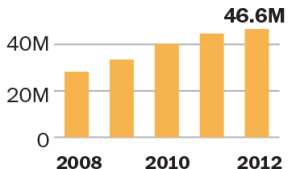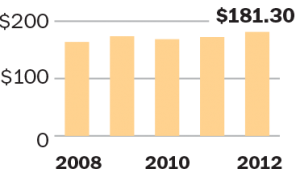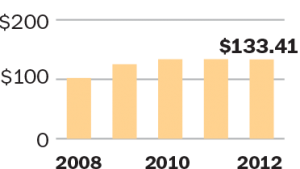After failing to pass a Farm Bill that included farm subsidies and food assistance (Supplemental Nutrition Assistance Program, or food stamps) in June, the House of Representatives narrowly passed a skeleton of a Farm Bill on July 11—without the food stamps. The House effectively left 46 million Americans wondering how to feed themselves and their families.
The response from House Republican leadership? House Speaker John Boehner of Ohio shrugged and said: “If ands and buts were candy and nuts, every day would be Christmas. (check out an irreverent look at Mr. Boehner) You’ve heard that before. My goal right now is to get the Farm Bill passed. We’ll get to those other issues later.” (NY Times, July 11)
So the hungry and indigent just have to wait until pigs fly, or Christmas comes in July. Congressmen who own farms themselves will get their subsidies, along with family farmers who actually need the federal support. Meanwhile, those other issues like food security; will have to wait. Indefinitely.
It’s not surprising for this particular House to react so callously. We need to remember the Sequester, the stalling on Immigration, and the repeated attempts to gut the Affordable Care Act. “Draconian” has become a cliché description of these individuals and their leader, who hide behind a lopsided view of consensus.
It seems the only way this House can get a bill passed is to carve up a great idea and throw the best parts away. We need to remind the Speaker of what consensus in our country really is: The majority of Americans still believe Food Stamps are necessary. (Data from FRAC, Food Research and Action Center)
Call him today at (202) 225-0600. Then we need to ask family and friends to do the same.
What is also evident is that the longer the House Republicans delay a vote on food stamps, the longer they make hunger in this country a “SNAP”. (See the Alliance’s previous coverage on the issue) The chances of President Obama signing a Farm Bill that does not include food stamps are slim to none. His veto will send both chambers of Congress into negotiations, which spell more delays for hungry families.![]()

The original purpose of marrying farm subsidies with food assistance was to move rural and urban states into a mutual agreement on how to support their respective populations when it comes to food policy. It may not have been perfect, and appeared more like a common-law marriage, but it worked. For nearly 50 years, it worked. With House Republicans refusing to negotiate or compromise, the nation waits at a standstill.
A standstill politically but when we see data below— we see that participation in the SNAP program has nearly doubled since 2008; grocery bills have increased; and with that rise, individual benefits only increased slightly. It is no surprise that with the drop in incomes, the high rates of unemployment and the debt burden of millions of Americans since the crash that same year that the country would see such an increase in participation. With individual benefits increasing so slowly, and food costs rising, clearly America’s working families are not seeing the gains of the so-named economic recovery.
Cuts seem to be the policy maneuver in this Congressional Era. And the Senate version of the Farm Bill includes sizable cuts to food stamps. House Democrats even agreed to some major cuts. What is important to note is that most Americans support a food stamp program, even if there need to some cuts, and certainly don’t support neutering the program. House Republicans do not hear that message—and seem hell bent on shredding financial supports to Americans at any cost.
We all need to push our state media to take an honest look at the House assault on the security of the American public. Food security needs a human face— we need to remind the greater public that our neighbors, friends and family are likely relying on assistance like SNAP (see the graphs below). Then—we take it to the House and demand a vote on a Farm Bill that includes a well-funded food stamps program.
The Alliance for a Just Society and affiliates are taking action. The Montana Organizing Project has been pushing its state media to take an honest look into the homes of people affected by the House vote. Check out the story here.
More can and needs to be done. Start with a phone call to Speaker Boehner’s office. Here’s his phone number again: (202) 225-0600.
Food stamp monthly averages
Individual Benefit: Received per person
January Grocery Bill: “Thrifty” plan for men, ages 19-50
Note: USDA’s “thrifty” food plan contains the lowest amount of purchased fats and sweets.
SOURCE: U.S. Census Bureau, U.S. Department of Agriculture Food Nutrition Service and the USDA Center for Nutrition Policy and Promotion


